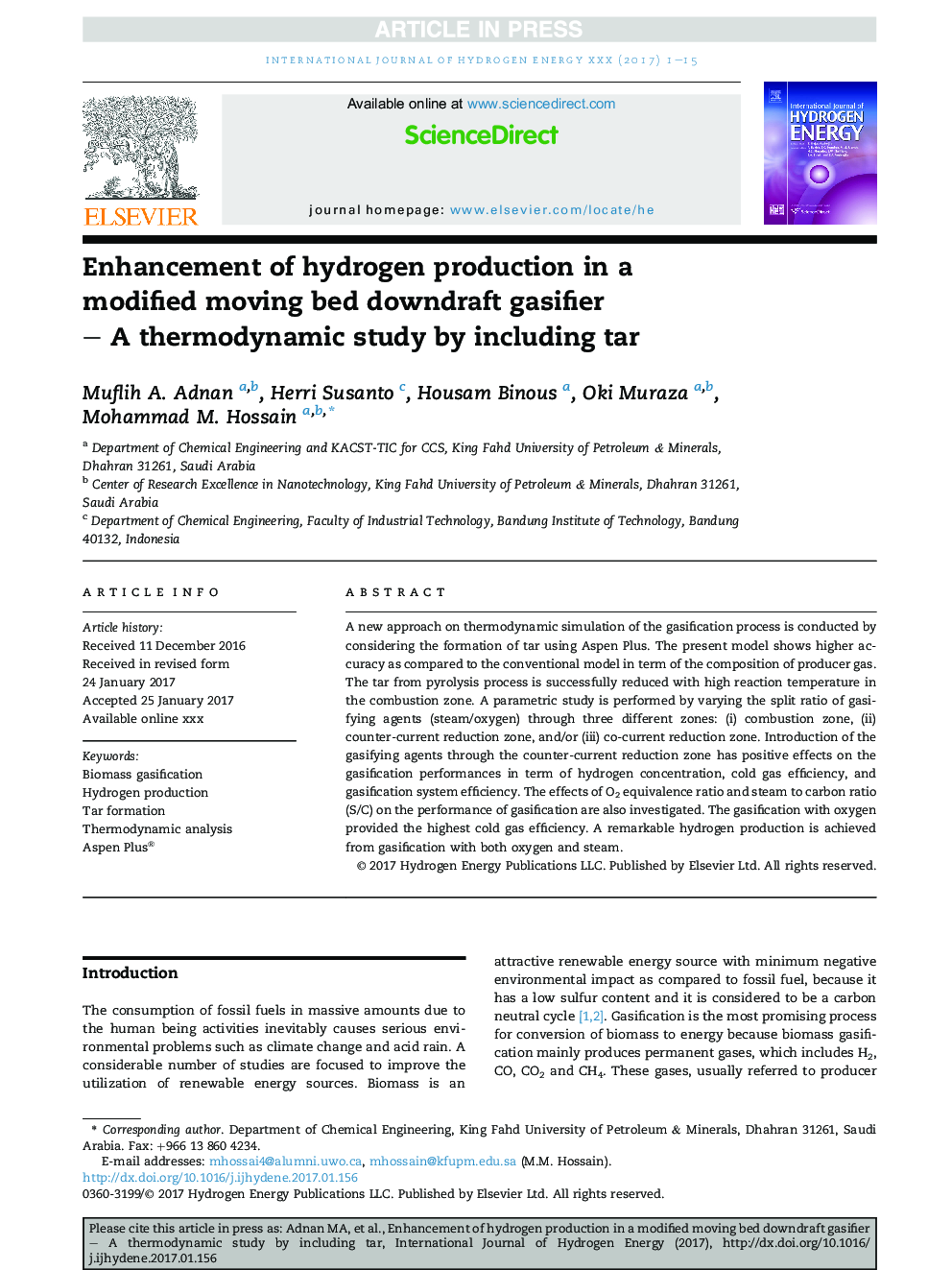| Article ID | Journal | Published Year | Pages | File Type |
|---|---|---|---|---|
| 5145704 | International Journal of Hydrogen Energy | 2017 | 15 Pages |
Abstract
A new approach on thermodynamic simulation of the gasification process is conducted by considering the formation of tar using Aspen Plus. The present model shows higher accuracy as compared to the conventional model in term of the composition of producer gas. The tar from pyrolysis process is successfully reduced with high reaction temperature in the combustion zone. A parametric study is performed by varying the split ratio of gasifying agents (steam/oxygen) through three different zones: (i) combustion zone, (ii) counter-current reduction zone, and/or (iii) co-current reduction zone. Introduction of the gasifying agents through the counter-current reduction zone has positive effects on the gasification performances in term of hydrogen concentration, cold gas efficiency, and gasification system efficiency. The effects of O2 equivalence ratio and steam to carbon ratio (S/C) on the performance of gasification are also investigated. The gasification with oxygen provided the highest cold gas efficiency. A remarkable hydrogen production is achieved from gasification with both oxygen and steam.
Related Topics
Physical Sciences and Engineering
Chemistry
Electrochemistry
Authors
Muflih A. Adnan, Herri Susanto, Housam Binous, Oki Muraza, Mohammad M. Hossain,
